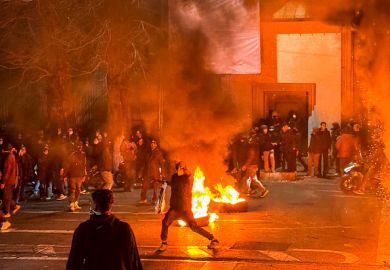Long before college rankings were ever dreamed of, the idea that public universities in the US might rival the private, independent institutions for prestige was far-fetched.
The “publics” originate from a movement in the mid-19th century to open up post-secondary education to working-class students, providing them with advanced career training, as well as general liberal arts studies courses. What began as a small, state-by-state effort quickly expanded in scale and scope when, in 1862, Congress passed the first of several comprehensive pieces of legislation known today as the Morrill Land-Grant Acts, which gave states title to federal-owned property to establish comprehensive higher education programmes designed primarily to train teachers, engineers, farmers, factory workers and military officers.
Initially, the academic reputation of these newly established public Land-Grant schools was considered adequate, if not outstanding. For the most part, their students were residents of that specific state: there was little traffic across borders, partly because higher prices were charged to out-of-state students. While there was enormous civic pride in attending one’s own state college, the swelling of the chests by the upper-class elites was reserved for the independent privates. This was a low-level Marxist class versus cash situation.
Tuition fees at the publics were kept “under market”, and as the Industrial Revolution advanced across the country, so too did higher education for thousands of individuals previously unable (by price and tradition) to take part. Higher education became one of the great social equalisers, providing an expanded range of professional opportunities – further accelerated, as if on steroids, by the famous postwar GI Bill, which, to this day, helps people returning from active military service to attend college and retool their lives.
Over the years, the state education systems developed multiple college campuses, expanding throughout their borders to accommodate all interested attendees with offerings in specialised and advanced courses. It became common to have at least one flagship campus, where advanced research was carried out, and where the most well-prepared students were accepted. These campuses quickly developed a reputation for academic quality rivalling that of the independent schools.
The 1980s saw further blurring of the distinction between the missions and budgets of public and private institutions. As tuition and fees rose at the latter, economically struggling lower- and middle-class families realised it was a comparative bargain to attend a highly regarded state college or university, even if they had to pay out-of-state fees. Out-of-jurisdiction students began flooding the admissions offices of the likes of the University of California, Berkeley and the universities of Virginia, Missouri and Michigan. Such universities gladly accepted ever greater numbers of these applicants as state funding for higher education began to stagnate or even decline. Economic necessity and a desire for academic quality intersected. The fact that a more diverse student body is seen as a plus to the overall academic experience for all parties only further diluted the publics’ original mission of educating “one’s own”.
And so we come to college rankings, which also date from the 1980s. My problem with these has always been that the emphasis on finance and staff-to-student ratios means that the academic One-Percenters (schools with the highest per capita endowment) remain at the top while the rest struggle to push the rock up the hill.
The new Wall Street Journal/Times Higher Education ranking is to be commended for looking more closely at issues such as student experience, engagement and diversity, and for examining value-added rather than raw outcomes. Yet endowment still counts for a lot, and the usual list of private institutions still heads the list.
Should the publics be disappointed? Perhaps – but they are well used to fighting for academic reputation with one hand tied behind their backs. Either way, they remain an integral part of a complex mix of local and national schools, two-year, four-year and advanced degree campuses, offering both market-based and reputation-based colleges that fit almost everyone’s needs. The State University of New York, for instance, comprises more than 60 individual institutions scattered across the state.
The difference between closely ranked schools becomes increasingly marginal the lower down you look in rankings. Moreover, in my heart of hearts, I think the differences between institutions are in the students more than the academic offerings. So the choice for most students, academics or administrators about where to study, teach or work is best made by personal factors.
If asked by a financially strapped student where to go, I most often respond: “If you get a great scholarship go to a private school. Otherwise, attend a state-supported school for undergraduate, excel academically and then let one of the more endowed (and famous) independent schools pay for your graduate training – which, in the professions, trumps undergraduate training anyway. Recruiters will see upward mobility on several levels when reviewing your résumé.”
Stephen Joel Trachtenberg is president emeritus and university professor at George Washington University in Washington, DC. He is a consultant at Korn Ferry International and a partner at Rimon Law.
POSTSCRIPT:
Print headline: In praise of the publics’ duties
Register to continue
Why register?
- Registration is free and only takes a moment
- Once registered, you can read 3 articles a month
- Sign up for our newsletter
Subscribe
Or subscribe for unlimited access to:
- Unlimited access to news, views, insights & reviews
- Digital editions
- Digital access to THE’s university and college rankings analysis
Already registered or a current subscriber?




